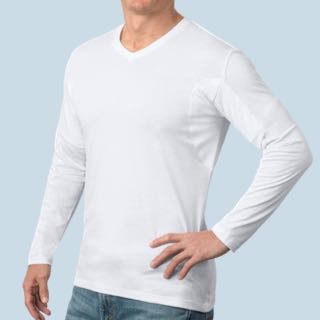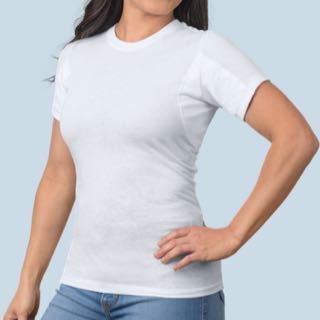Sweating in Children: How Much Is Too Much?
Does sweating interfere with your child’s life on a daily basis? Do they experience extreme bouts of sweat that soaks through their clothes and interferes with school and social activities?
All children sweat a certain amount. Physical activity, warm and humid environments, or a cold or flu with a fever can cause kids to sweat. But in these instances, sweating will subside as soon as your child feels better, or steps into a cooler, more comfortable environment.
If your child sweating more than normal regardless of sickness, their activity or surroundings, they may have hyperhidrosis, a condition that causes you to sweat up to five times more than necessary to regulate body temperature.
Hyperhidrosis isn't common in young children, but is possible. Extreme sweating may also be a symptom of an underlying medical problem. Here’s everything you need to know about sweating in children and hyperhidrosis in kids.
Symptoms of Excessive Sweating in Children
Signs of abnormal sweating in kids include:
- Sweating on their face or arms even when the temperature is comfortable
- Sweat that soaks through their clothes
- Excessive sweating in the hands that interferes with school and play
- Sweat that worsens in warm environments and stressful situations
Types of Hyperhidrosis in Kids
Hyperhidrosis affects 0.6 percent of children and 1.6 percent of adolescents. There are two types of hyperhidrosis that can affect children.
Primary hyperhidrosis causes excessive sweating in one part of the body, such as the armpits, hands or feet. Kids with primary hyperhidrosis typically don’t sweat while sleeping.
Doctors aren’t sure exactly what causes primary hyperhidrosis, but research shows it can be hereditary. Otherwise healthy children can still be diagnosed with primary hyperhidrosis. While primary hyperhidrosis symptoms usually appear during puberty or early adulthood, they can develop during childhood.
Get the full guide to teen sweating.
Secondary hyperhidrosis refers to generalized excessive sweating that occurs all over the body. It's typically caused by an underlying medical condition or medication. Kids with secondary hyperhidrosis are also more likely to experience night sweats.
Many medical conditions and medications can cause secondary generalized hyperhidrosis in kids. Common causes include:
- Infections
- Hyperthyroidism
- Diabetes
- Metabolic and hormonal disorders
- Prescription drugs
- Antidepressants such as Norpramin, Pamelor and Protriptyline
Excessive sweating doesn’t always equal a serious medical condition. But if you suspect your child might have hyperhidrosis, you should consult with their pediatrician to determine any underlying causes.
Your pediatrician will complete a physical exam, perform a detailed evaluation of the child’s symptoms and run tests to determine if the sweating is a sign of another condition.
Safe Hyperhidrosis Treatments for Children
While hyperhidrosis doesn't have a cure, it is treatable. If your child has secondary hyperhidrosis, your pediatrician will work to treat the underlying condition that is causing excessive sweating.
If your child has primary hyperhidrosis, there are a number of treatment options available. Here are some of the safest treatments:
Antiperspirant
Antiperspirants contain aluminum, which clog sweat glands and prevents them from producing sweat. Your pediatrician or dermatologist can prescribe topical antiperspirants like Drysol and Xerac AC to combat hyperhidrosis in kids. Apply topical antiperspirants to the affected area once a day – preferably at night.
Read about the best and safest deodorants for kids.
Iontophoresis
During iontophoresis, a medical device passes a mild electrical current through water to your skin’s surface using shallow pans or special pads. This low-voltage electrical treatment is especially effective in treating palmoplantar hyperhidrosis (hands and feet).
Iontophoresis is not painful, and treatments last 20 to 30 minutes. Your doctor will recommend a regular maintenance schedule (usually one treatment per week) to keep your child’s sweating symptoms at bay.
Oral Medications
Anticholinergics are the most common class of hyperhidrosis medications for children. They reduce sweating by drying out the entire body.
Anticholinergics can cause a variety of side effects, including dry mouth, blurred vision and urinary retention – so it’s important to keep your child hydrated and watch for symptoms of overheating when they're taking hyperhidrosis medication.
Sweat Proof Shirts
If other anti-sweat solutions aren’t working for your child, try a sweat proof undershirt like the Thompson Tee, available in a variety of styles, fits and necklines.
The men's and women's sweat proof Thompson Tee provides all-natural sweat protection in the armpits. The patented sweat proof technology completely absorbs armpit sweat and blocks sweat marks from showing, so your child can stay cool and comfortable all day long.
Try a Thompson Tee risk-free today!


